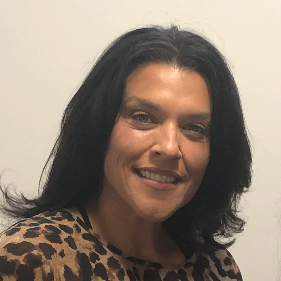‘It has completely changed my life’: Robotic procedure helps patient struggling with endometriosis
Soli Redfield remembers thinking “not again,” after being told that she had a large uterine fibroid earlier this year.
“I felt overwhelmed,” Redfield remembered. “I knew first-hand how taxing and exhausting surgery could be. I didn’t think I could go through another long recovery.”
Redfield underwent her first surgical procedure when she was just 16 years old.
“My first surgery was a laparoscopic procedure to remove a cyst,” recalled Redfield.
In her early teens, Redfield had been diagnosed with endometriosis, a severe inflammatory condition that can cause constant and intense pelvic pain. It was a familial condition she inherited from her mother.
According to some studies, women who have a first-degree relative, like a mother or sister, with endometriosis are seven times more likely to develop the condition than females who do not have a close relative with the condition.
“At the time, having surgery to remove a cyst did not seem like a big deal,” Redfield explained. “It was similar to what I had seen my mother experience — along with having extreme bleeding, excruciating back pain and cramping as a part of your normal menstrual cycle.”
However, over the next 30 years Redfield endured two more laparoscopic procedures along with struggling with anemia, intense pelvic and back pain, nausea and debilitating headaches.
“It felt like my entire life revolved around my condition,” she reflected.
It felt like my entire life revolved around my condition.”—Soli Redfield
Precise robotic-assisted treatment
For her uterine fibroid, Redfield was referred to UC Davis Health. Her care team included Bahareh M. Nejad, clinical professor of Obstetrics and Gynecology and director of robotic surgery.
“I didn’t want to just have another surgery to remove the fibroid,” said Redfield. “I wanted to learn what my options were to treat my overall symptoms.”
During her appointment, Nejad determined that Redfield was a good candidate for a robotic-assisted hysterectomy.
“Dr. Nejad sat down with me for over an hour and discussed all of my treatment options,” said Redfield. “It never felt like she was looking at a file. She listened to me, and I truly felt heard.”
In the end, Redfield decided to have her uterus removed. In collaboration with Hussein A. Warda, associate professor of female pelvic medicine and reconstructive surgery, Nejad performed a robotic-assisted hysterectomy and a laparoscopic mesh sacrocolpopexy procedure.
Utilizing the Da Vinci XI dual console robot , Nejad was able to perform the hysterectomy through a few small incisions in the abdomen. Warda was then able to lift the pelvic organs and attach medical-grade mesh material to support the pelvic organs like a sling.
“Because we utilized one of our minimally invasive robotic platforms, Soli was able to be discharged in less than 24 hours after her procedure,” said Nejad. “These minimally invasive robotic procedures generally reduce pain and scarring, blood loss, infection rates, need for pain medications and recovery times, allowing a faster return to normal life for our patients.”
I didn’t realize how much pain I was in. It has changed my whole body.”—Soli Redfield
Better than ever
Within six weeks of her procedure, Redfield returned to her everyday life — minus the intense pelvic and back pain, nausea and debilitating headaches.
“I didn’t realize how much pain I was in,” reflected Redfield. “It has changed my whole body.”
Redfield is now pain free. She is more active — golfing multiple times a week. She is also grateful to everyone at UC Davis Health, including Nejad, Warda and each nurse, technician and team member she encountered.
“It has completely changed my life!” she exclaimed.





